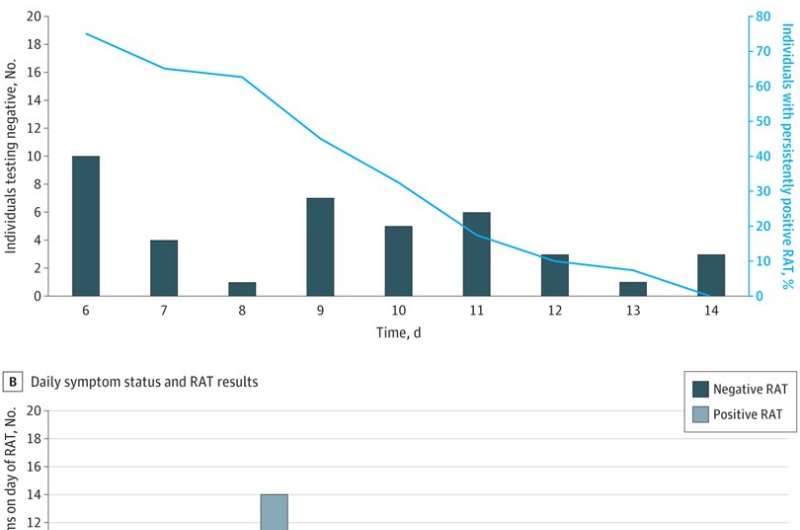August 4, 2022 report
COVID-19 culture testing suggests some people may remain infectious after five days

A team of researchers from Brigham and Women's Hospital, the National Emerging Infectious Diseases Laboratories and the Broad Institute of MIT and Harvard reports that some people may be able to infect others for more than five days after initial infection. In their paper published in JAMA Network Open, the researchers describe how they tested infected patients using both rapid antigen tests (RATs) and viral cultures to learn more about how long infected people are able to pass along the SARS-CoV-2 virus to other people.
Current guidelines provided by the U.S. Centers for Disease Control advise isolating people infected with COVID-19 for five days after initial infection to prevent the spread of the disease. In this new effort, the researchers have found evidence suggesting that such a span of days may not be enough—at least for some people.
To learn more about how long people remain infectious after contracting COVID-19, the researchers enlisted the assistance of 40 people in the Boston area who were known to be infected and who were not expected to be at risk for serious symptoms. All of the volunteers had been vaccinated and received a booster shot. Also, at the time of the study, omicron BA.1 was the predominant strain. All of the volunteers were asked to fill out daily symptom logs and to self-test daily for COVID-19 using a Flowflex lateral flow RAT test, starting at day six of their infection. Each volunteer also submitted a culture swab for antigen testing each day, also starting at day six.
The researchers found that 75% of the volunteers were antigen positive on day six, and many of them reported no symptoms. They also found culturable virus loads in 35% of those who had tested positive on the antigen tests. All of the volunteers who tested positive on the RAT also tested positive on the culture test. And out of six volunteers who tested positive on the culture test on day six, four would have been released from isolation under current CDC guidelines.
The researchers acknowledge that their study involved very few participants but that their findings were strong enough to show that at least some people can remain infected for more than five days after initial infection.
More information: Lisa A. Cosimi et al, Duration of Symptoms and Association With Positive Home Rapid Antigen Test Results After Infection With SARS-CoV-2, JAMA Network Open (2022). DOI: 10.1001/jamanetworkopen.2022.25331
© 2022 Science X Network



















